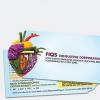To add to the useful contributions made by FurFarmandFork and Charkes, I personally find that the requirements for verification and validation of Personnel Practices causes a lot confusion. There is additional confusion by using the terms meeting the requirements and confirming the effectiveness and flipping between verification and validation.
2.4.2 Good Manufacturing Practices (Mandatory)
2.4.2 Implementation Guidance
Pre-requisite programs shall be documented and implemented as applicable to the scope of certification. Each applied pre-requisite program must be verified by the SQF practitionerto ensure that it is achieving its intended purpose. The SQF practitioner is required to sign off on each pre-requisite program indicating that the verification has been completed.
2.4.2 Auditing Guidance
Documentation for the pre-requisite programs (PRPs) will be checked at the desk audit. This includes procedures and work instructions applicable to the relevant PRP module(s), or alternative methods of control. The auditor will confirm compliance to this element at the site audit by interview, observation and sampling and checking records. Evidence may include:
• Records of PRP validations are available;
• Personnel practices and processing techniques meet the PRP requirements and the documented procedures.
2.5.1 Validation & Effectiveness (Mandatory)
2.5.1 Implementation Guidance
Validation involves testing over and above daily monitoring to ensure that established food safety limits are effective, i.e., achieve the desired results, so that the supplier can have confidence that the product and process are safe.
The supplier must also have documentation showing that the methods and control measures provide the level of control needed.
Some potential methods for confirming the effectiveness of specific pre-requisite programs are listed below. The implementation of these specific methods is not necessarily required, but confirmation of the effectiveness of the program is required. This is not an exhaustive list, but provides some examples:
• Personnel practices: Observe employees during the internal audit or daily operational inspection to ensure they are meeting the requirements of the supplier’s program.
• Personnel processing practices: Observe employees during the internal audit or daily operational inspection to ensure they are meeting the requirements of the program.
Clearly the examples above could be described as Verification Activities - 2.5.2 Verification Activities (Mandatory)
Guidance for 2.5.1 Validation & Effectiveness (M) includes: Critical food safety limits are said to be validated because they have been confirmed by scientific analysis. Pre-requisite programs and other food safety controls, however are confirmed by observation, inspection or audit to ensure that they are achieving the desired result.
Kind regards,
Tony



















